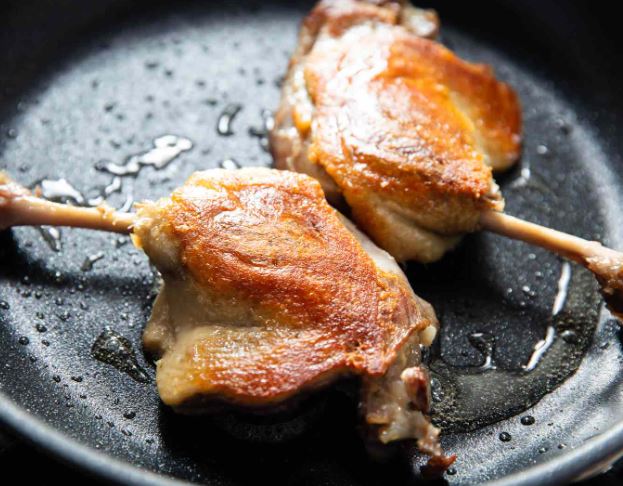For Goose:
Find goose on Harvie this week!
These geese are a heritage breed, raised about 3 months completely free range on pasture with supplemental free choice grains. Geese LOVE to forage and prefer to eat an enormous variety of grasses and weeds as their main, warm-season diet.
Goose meat has more iron than chicken, beef, and pork as well as incredibly high levels of Vitamin B-6. We recommend saving the fat that renders out after cooking goose (in the fridge) for future use as a butter or skillet seasoner.
The best way to cook a whole goose is to roast it slowly with lemon, wine, herbs, salt, and pepper, or to break it down before roasting it into pieces. If it is broken down, you can do the legs confit style and the breasts medium rare (145-150). They are red meat birds, so only the wings and legs need to be cooked past 165 for tenderness.
For the Duck:
Find Muscovy ducks from Birch Creek Farmery on Harvie!
Muscovy ducks are a unique heritage breed. They are the only duck that does not have a Mallard-related lineage! Known as the “connoisseur’s duck” their meat is *lean* and reminiscent of veal/roast beef. It is excellent for eating, but it does require mindful cooking techniques.
The meat is more delicate to heat, and we recommend these techniques:
For whole ducks, thighs, wings, and drums: Slow-cook and cover at no more than 275 degrees for a few hours. The bone edges will become exposed when cooked tender, and you can finish it by broiling it if needed to crisp the skins. Season simply, or try teriyaki or citrus glazes.
For breasts: Sear in a hot skillet to medium rare. If cooked too long (past medium), the muscle fibers will shorten, and it will be tougher. If you would like fully cooked duck breast, we recommend the above technique with some herbs, orange, and bone broth to keep it moist! If you leave it breast side up, you can broil it at the end for a crispy skin finish.
For ground products: Use as you would traditional ground beef/pork/chicken. We love ground duck pot pies and ground duck noodle bowls (think cilantro, lime, sambal oelek, and honey drizzle).
Feel free to use other recipes for duck, but be aware that it usually calls for — or assumes — Pekin duck is the breed. Pekin ducks have much, much more fat and water content in their meat. If you use another recipe, make sure to not drain the fat when using Muscovy duck, keep checking the moisture levels in the pan/dish, wait until the edges of the bones are exposed, and MOSTLY use slow and low heat techniques! Don’t be afraid to reduce the recipe’s heat to 275 degrees. The duck will still cook to its recommended 160 degrees, though it may take longer. Remember to check that the meat is pulled back from the edges of the bones instead of sticking to a hard cook time if using other recipes.

